Key takeaways
- Seesaw transforms feedback into interactive dialogue, enhancing student engagement and reflection through real-time comments and various response formats.
- The platform promotes inclusivity, allowing shy students to express themselves more freely, which aligns with the goals of activist teaching.
- Effective organization of folders and timely feedback routines on Seesaw are crucial for maintaining student motivation and ensuring clear communication.
- Challenges include managing the platform’s structure with fluid discussions and addressing equity in access to technology among students.
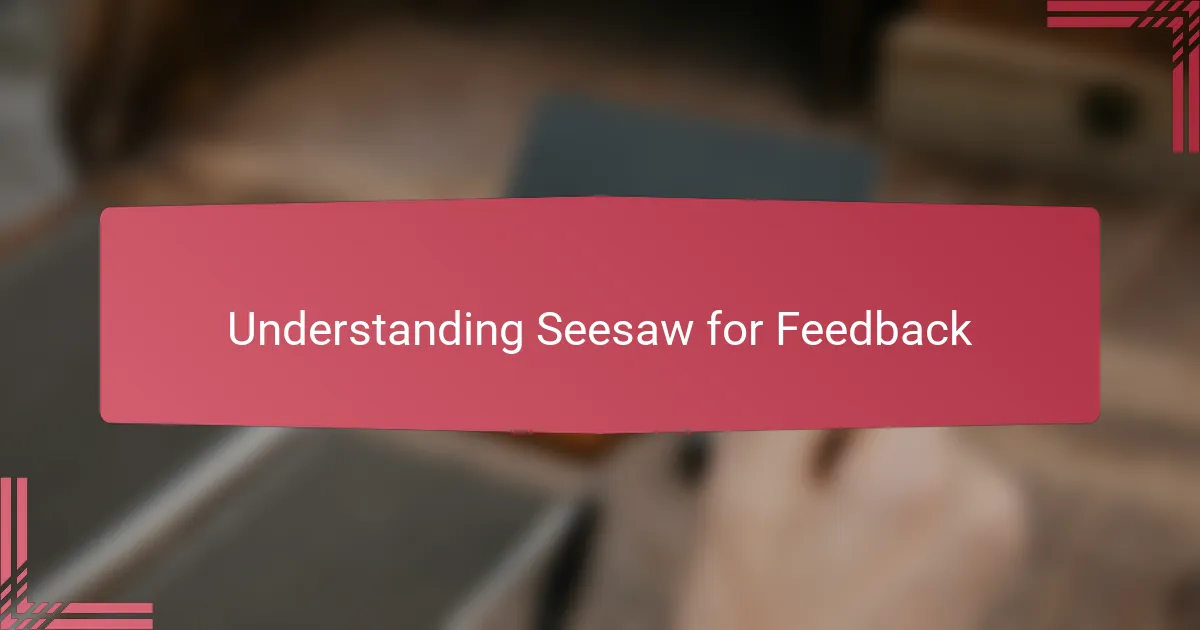
Understanding Seesaw for Feedback
Seesaw is more than just a digital portfolio; it’s a dynamic space where feedback and learning genuinely connect. From my experience, its user-friendly design allows students to showcase work in various formats, making feedback feel personalized rather than generic. Have you ever struggled to give timely input that truly resonates? Seesaw can bridge that gap by inviting real-time comments, voice notes, and even drawings directly on student submissions, which I find makes feedback more meaningful and immediate.
What strikes me about Seesaw is how it shifts feedback from a one-way street into an interactive conversation. When I use it, I notice students respond faster and with more reflection, likely because the platform encourages them to revisit their work alongside my suggestions. This interplay feels less like correction and more like collaboration—a shift I deeply appreciate as a teacher striving to empower learners.
At times, I wonder if all feedback tools can create this level of engagement. Seesaw’s ability to make visible the learning journey, not just the final product, changes how I think about assessment. It’s a tool that doesn’t just store answers but catches the nuances of growth in real time, which feels invaluable for fostering genuine student progress.
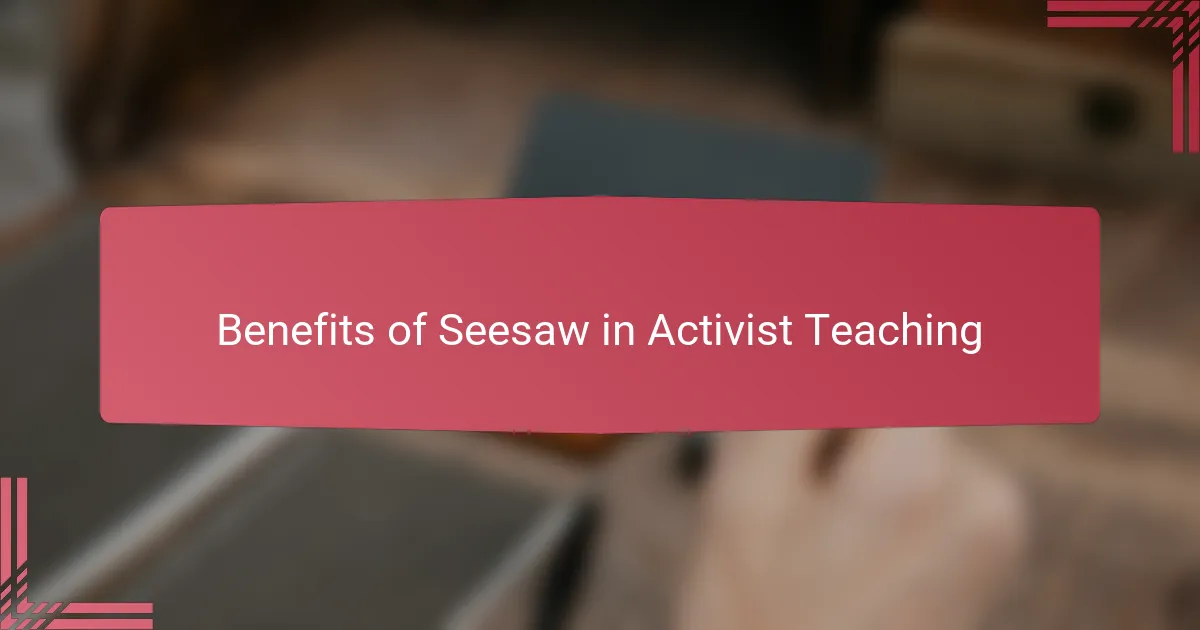
Benefits of Seesaw in Activist Teaching
One of the benefits I truly appreciate about using Seesaw in activist teaching is how it amplifies student voices. When students can share their reflections through videos or drawings, it feels like they’re not just submitting work—they’re telling their own stories. Have you noticed how giving them multiple ways to express themselves uncovers perspectives that might otherwise stay hidden?
Another aspect that resonates with me is the platform’s support for inclusivity. I’ve seen students who might be shy in class come alive when they respond via voice notes or written feedback on Seesaw. This flexibility levels the playing field and aligns perfectly with the activist goal of empowering every learner, no matter their background or communication style.
What’s more, Seesaw transforms feedback into an ongoing dialogue rather than a final judgment. From what I’ve witnessed, this encourages critical thinking and agency because students don’t just receive critiques—they engage with them, question them, and apply them. Isn’t that the kind of deep, reflective learning we want in classrooms committed to social justice?
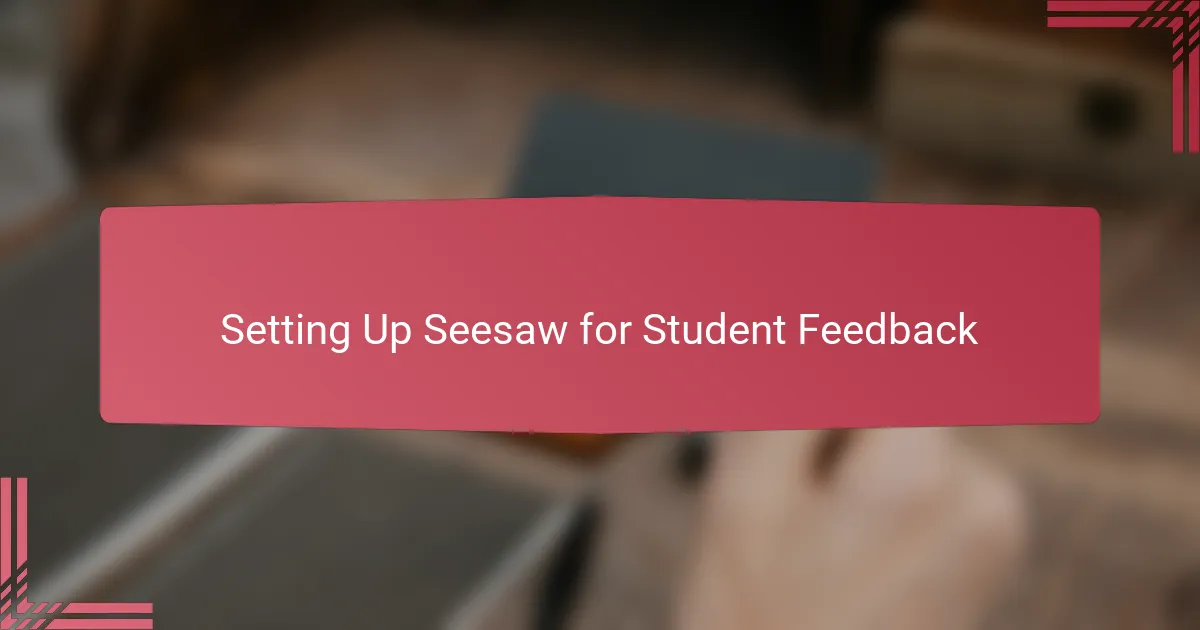
Setting Up Seesaw for Student Feedback
Getting Seesaw ready for student feedback was surprisingly straightforward in my experience. I remember setting up the class roster and inviting students—it felt seamless, like the platform was inviting us into an easy conversation from the start. Have you ever felt overwhelmed by tech setups? This one didn’t add to that stress, which meant I could focus on the feedback rather than the logistics.
One thing I quickly realized is the importance of organizing folders and activities clearly. I made sure each assignment had its own space, so both my students and I could easily track progress. It’s a simple step, but it really helped me stay on top of giving timely, relevant feedback without feeling swamped.
I also experimented with setting notifications to catch student responses as they came in. That instant connection kept the momentum going, and honestly, it made me feel more present in their learning journey. Doesn’t it feel good when tech actually brings you closer to your students instead of creating distance? For me, Seesaw nailed that balance.
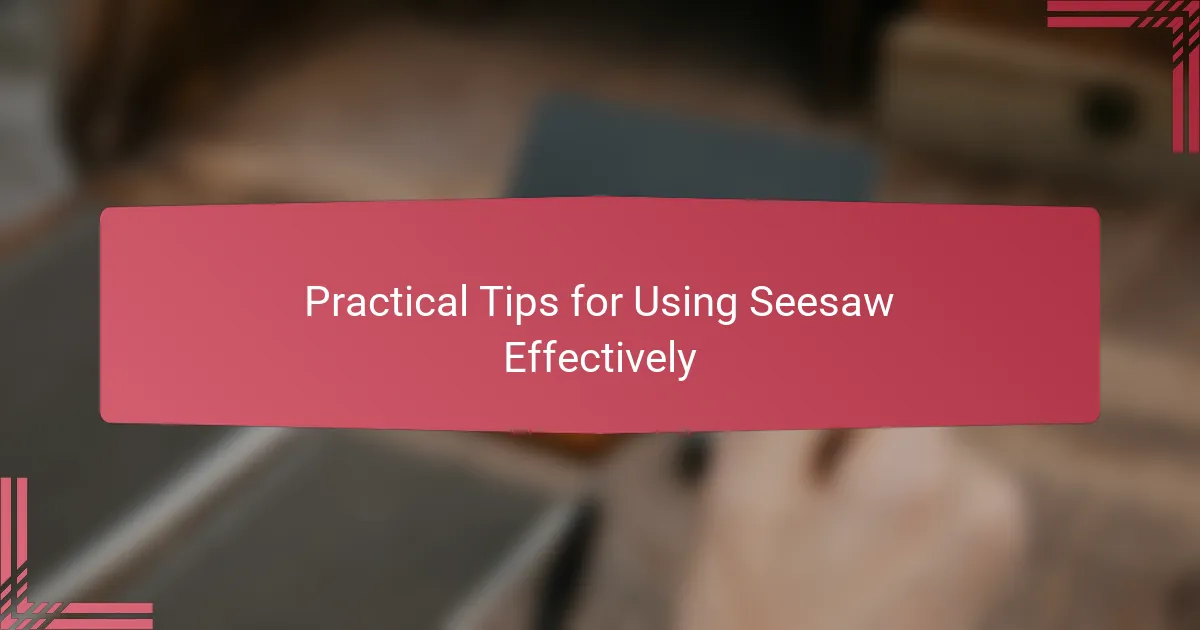
Practical Tips for Using Seesaw Effectively
One practical tip I’ve found incredibly helpful is dedicating a few minutes each day to respond to student submissions on Seesaw. It sounds simple, but making timely feedback a routine keeps the dialogue alive and shows students that their efforts truly matter. Have you ever noticed how quickly students lose motivation when feedback feels delayed? Keeping that momentum going has made all the difference for me.
I also recommend encouraging students to use Seesaw’s multimedia tools to express their thoughts on feedback. I remember a student once responded to my comment with a quick voice note explaining their next steps, which sparked a richer conversation than text alone ever could. This feature turns feedback into a genuine exchange rather than a static comment, which, in my experience, boosts student ownership over their learning.
Finally, don’t underestimate the power of clear instructions and consistent routines within Seesaw. In my classroom, setting expectations around how and when feedback will be given helped students engage more thoughtfully and reduced confusion. Have you considered how structured habits can create a safe space for feedback? That clarity has made using Seesaw not just effective, but enjoyable for everyone involved.

Challenges of Using Seesaw in Activist Classrooms
Using Seesaw in activist classrooms isn’t without its hurdles. One challenge I’ve encountered is balancing the platform’s structure with the fluid, often messy nature of social justice discussions. Have you ever noticed how digital tools sometimes struggle to capture the full complexity of student voices when topics demand nuance? I’ve found that the linear format of Seesaw can sometimes limit spontaneous dialogue and deep inquiry, which are essential in activist spaces.
Another issue I wrestle with is equity in access. Even though Seesaw is designed to be user-friendly, not all students have consistent internet or devices at home. This digital divide can unintentionally silence some voices, contradicting the inclusive goals we hold dear as activist educators. It’s frustrating because while the platform promises amplified student expression, real-world barriers still interfere, and I have to find workarounds to keep everyone engaged.
Lastly, there’s the emotional weight that comes with using Seesaw for feedback on sensitive topics. I’ve noticed that when students share personal reflections related to activism, the feedback needs to be especially thoughtful and mindful. Sometimes, crafting responses feels like walking a tightrope — how do I offer critique without diminishing student courage or shutting down difficult conversations? These moments remind me that beyond the tech, the heart of activist teaching lives in the relationships we build.
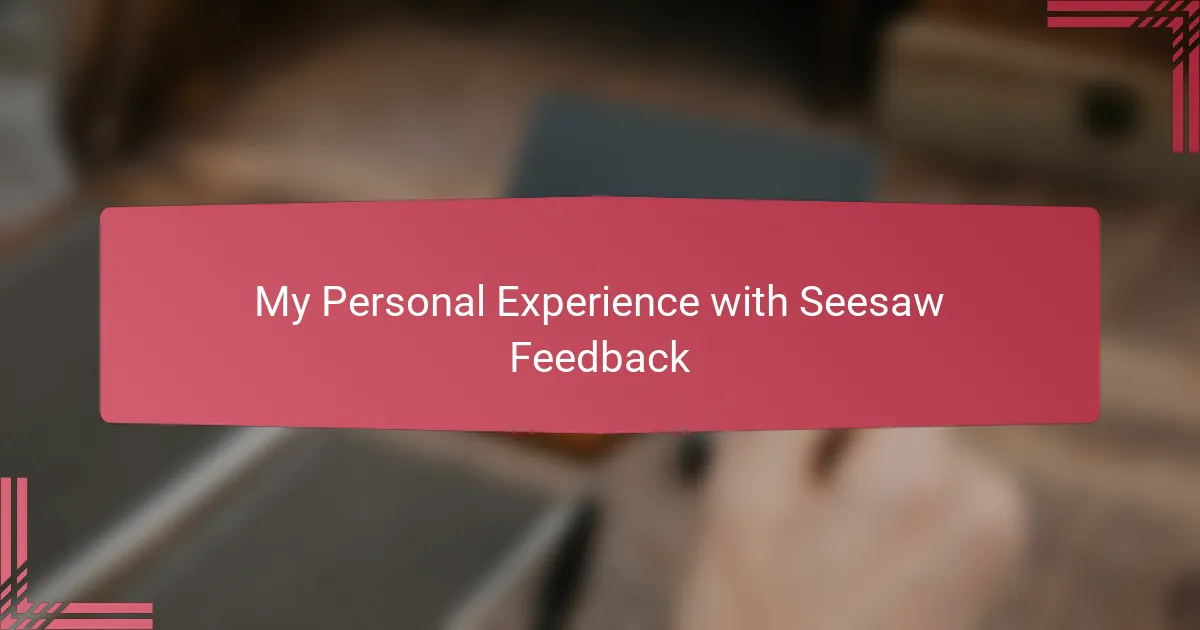
My Personal Experience with Seesaw Feedback
When I first started using Seesaw for feedback, I was surprised by how naturally it fit into my teaching flow. One moment that sticks with me is when a student replied to my comment with a drawing that perfectly captured their understanding—a response I never would have gotten through traditional written feedback. Doesn’t it make you wonder how much richer our feedback could be if we embrace more creative, immediate ways to connect?
I’ve also found that seeing students revisit their work after my input changes the whole dynamic of feedback. It’s not just about pointing out mistakes anymore; it feels more like a shared journey toward improvement. Sometimes I catch myself feeling genuinely excited to check their updates, which is not something I took for granted before using Seesaw.
Of course, it hasn’t always been smooth sailing. There was a time when a shy student used voice notes to express confusion instead of raising their hand, and that small shift helped me reach them in a way words on a screen never could. Moments like that remind me how powerful—and personal—feedback can be when technology truly serves connection rather than just convenience.